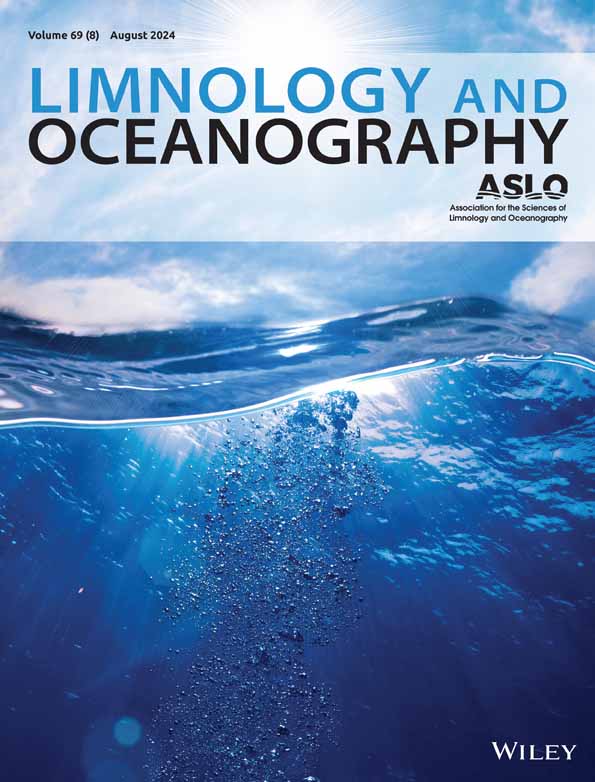Advancing an integrated understanding of land–ocean connections in shaping the marine ecosystems of coastal temperate rainforest ecoregions
IF 3.8
1区 地球科学
Q1 LIMNOLOGY
引用次数: 0
Abstract
Land and ocean ecosystems are strongly connected and mutually interactive. As climate changes and other anthropogenic stressors intensify, the complex pathways that link these systems will strengthen or weaken in ways that are currently beyond reliable prediction. In this review we offer a framework of land–ocean couplings and their role in shaping marine ecosystems in coastal temperate rainforest (CTR) ecoregions, where high freshwater and materials flux result in particularly strong land–ocean connections. Using the largest contiguous expanse of CTR on Earth—the Northeast Pacific CTR (NPCTR)—as a case study, we integrate current understanding of the spatial and temporal scales of interacting processes across the land–ocean continuum, and examine how these processes structure and are defining features of marine ecosystems from nearshore to offshore domains. We look ahead to the potential effects of climate and other anthropogenic changes on the coupled land–ocean meta‐ecosystem. Finally, we review key data gaps and provide research recommendations for an integrated, transdisciplinary approach with the intent to guide future evaluations of and management recommendations for ongoing impacts to marine ecosystems of the NPCTR and other CTRs globally. In the light of extreme events including heatwaves, fire, and flooding, which are occurring almost annually, this integrative agenda is not only necessary but urgent.推进对塑造沿海温带雨林生态区海洋生态系统的陆地-海洋联系的综合理解
陆地和海洋生态系统紧密相连、相互影响。随着气候变化和其他人为压力的加剧,连接这些系统的复杂路径将以目前无法可靠预测的方式加强或削弱。在这篇综述中,我们提供了一个陆地-海洋耦合及其在塑造沿海温带雨林(CTR)生态区海洋生态系统中的作用的框架。我们以地球上最大的沿海温带雨林生态区--东北太平洋沿海温带雨林生态区(NPCTR)--为案例,整合了目前对整个陆地-海洋连续统一体中相互作用过程的时空尺度的理解,并考察了这些过程是如何构建从近岸到离岸领域的海洋生态系统并使其具有决定性特征的。我们展望了气候和其他人为变化对陆地-海洋耦合元生态系统的潜在影响。最后,我们回顾了主要的数据缺口,并为综合、跨学科方法提供了研究建议,旨在指导未来对北太平洋热带雨林研究区和全球其他热带雨林研究区海洋生态系统的持续影响进行评估并提出管理建议。鉴于热浪、火灾和洪水等极端事件几乎每年都会发生,这一综合议程不仅必要,而且紧迫。
本文章由计算机程序翻译,如有差异,请以英文原文为准。
求助全文
约1分钟内获得全文
求助全文
来源期刊

Limnology and Oceanography
地学-海洋学
CiteScore
8.80
自引率
6.70%
发文量
254
审稿时长
3 months
期刊介绍:
Limnology and Oceanography (L&O; print ISSN 0024-3590, online ISSN 1939-5590) publishes original articles, including scholarly reviews, about all aspects of limnology and oceanography. The journal''s unifying theme is the understanding of aquatic systems. Submissions are judged on the originality of their data, interpretations, and ideas, and on the degree to which they can be generalized beyond the particular aquatic system examined. Laboratory and modeling studies must demonstrate relevance to field environments; typically this means that they are bolstered by substantial "real-world" data. Few purely theoretical or purely empirical papers are accepted for review.
 求助内容:
求助内容: 应助结果提醒方式:
应助结果提醒方式:


